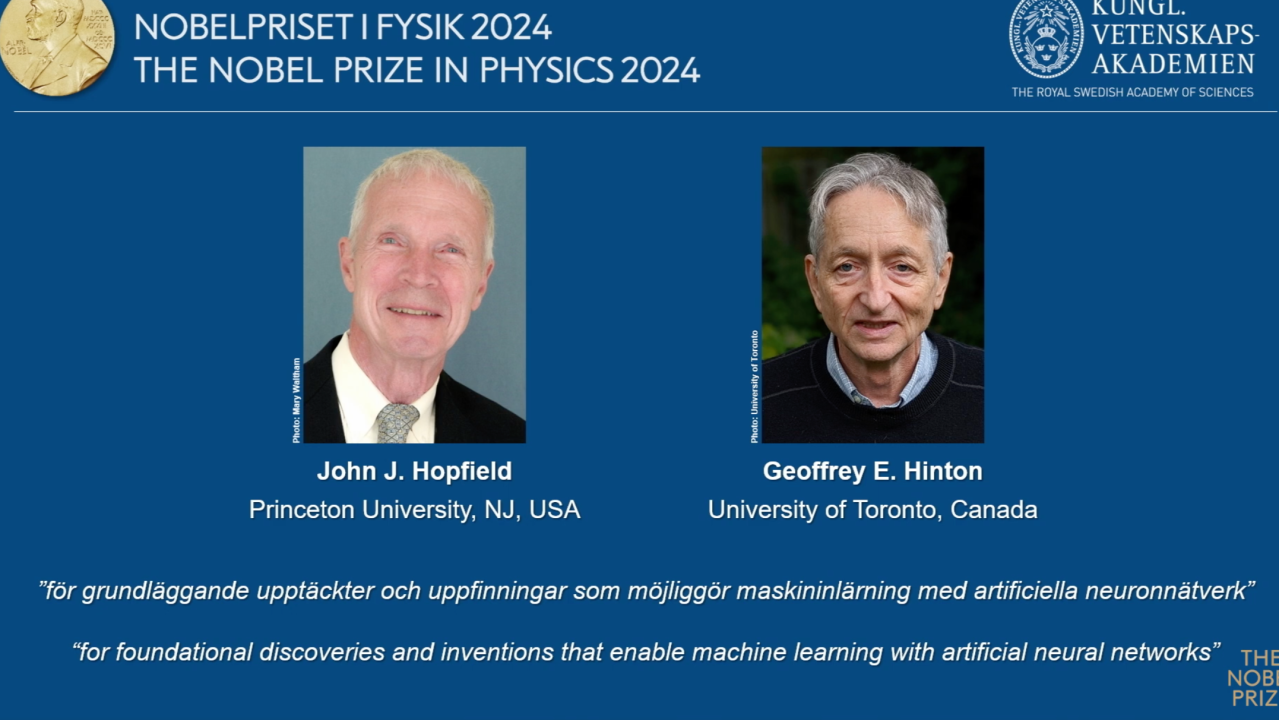
October 8, 2024
Jiajie Zhang, PhD
Dean and Professor
Glassell Family Foundation Distinguished Chair in Informatics Excellence
McWilliams School of Biomedical Informatics
University of Texas Health Science Center at Houston (UTHealth Houston)
The 2024 Nobel Prize in Physics was awarded to two groundbreaking scientists whose early work laid the foundation for today’s advancements in artificial intelligence (AI) and machine learning (ML). John J. Hopfield (Princeton University) and Geoffrey E. Hinton (University of Toronto) were honored “for foundational discoveries and inventions that enable machine learning with artificial neural networks.” This award marks a historic moment, recognizing the profound role that physics has played in driving the AI revolution.
Neural Networks
At the heart of today’s AI breakthroughs are artificial neural networks, a technology that owes its roots to neuroscience, psychology, and physics. John Hopfield created the Hopfield Network in the 1980s, drawing parallels between physical systems and neural networks to store and retrieve patterns from noisy or incomplete data. His model, inspired by atomic spin systems in physics, was a breakthrough in how we understood and built early neural networks.
Geoffrey Hinton and colleagues developed the Boltzmann machine, an AI model based on statistical physics that can learn and classify data by recognizing patterns. Hinton’s work didn’t stop there—he helped lead the deep learning revolution that has reshaped AI today, enabling machines to process information with extraordinary accuracy.
The Role of Backpropagation and David Rumelhart
One of the most critical breakthroughs in AI was the development of the backpropagation algorithm, co-authored by David Rumelhart, Geoffrey Hinton, and Ronald Williams in 1986. Backpropagation is the driving force behind training deep neural networks, allowing AI systems to learn from vast amounts of data. Although David Rumelhart passed away in 2011, his contributions remain pivotal to AI’s rise.
From 1986 to 1992, I had the privilege of being at the Institute for Cognitive Science at UC San Diego, co-directed by my PhD advisor, Donald A. Norman, and David Rumelhart. I witnessed firsthand the early work that shaped today’s AI, serving as a teaching assistant for the course Parallel Distributed Processing, based on Rumelhart et al.’s 1986 book of the same name. At the time, the world wasn’t quite ready for an AI revolution, but the foundational work was being done—work that would not fully come to fruition until 2012, when a deep learning breakthrough was made at the ImageNet Competition and deep learning finally took off.
A Nobel Prize Well Deserved
The 2024 Nobel Prize in Physics reminds us that the journey toward today’s AI breakthroughs began decades ago, with visionary researchers laying the groundwork for a future they could only imagine. John Hopfield and Geoffrey Hinton's work, deeply rooted in physics, is now shaping the technology that powers our modern world. From healthcare and finance to autonomous vehicles, AI systems built on their discoveries are transforming industries and solving problems in ways that continue to astonish.
As AI continues to evolve, this Nobel Prize not only celebrates the achievements of these pioneers but also highlights the critical role that interdisciplinary research—particularly between physics and AI—will play in the future of technology.
References:
1. Rumelhart, D. E., McClelland, J. L., & the PDP Research Group. (1986). Parallel distributed processing: Explorations in the microstructure of cognition (Vol. 1 & 2). MIT Press.
2. Rumelhart, D. E., Hinton, G. E., & Williams, R. J. (1986). Learning representations by back-propagating errors. Nature, 323(6088), 533–536. https://doi.org/10.1038/323533a0
3. Hopfield, J. J. (1982). Neural networks and physical systems with emergent collective computational abilities. Proceedings of the National Academy of Sciences, 79(8), 2554–2558. https://doi.org/10.1073/pnas.79.8.2554
4. Krizhevsky, A., Sutskever, I., & Hinton, G. E. (2012). ImageNet classification with deep convolutional neural networks. Advances in Neural Information Processing Systems, 25, 1097–1105.
Related Articles on the AI Revolution: